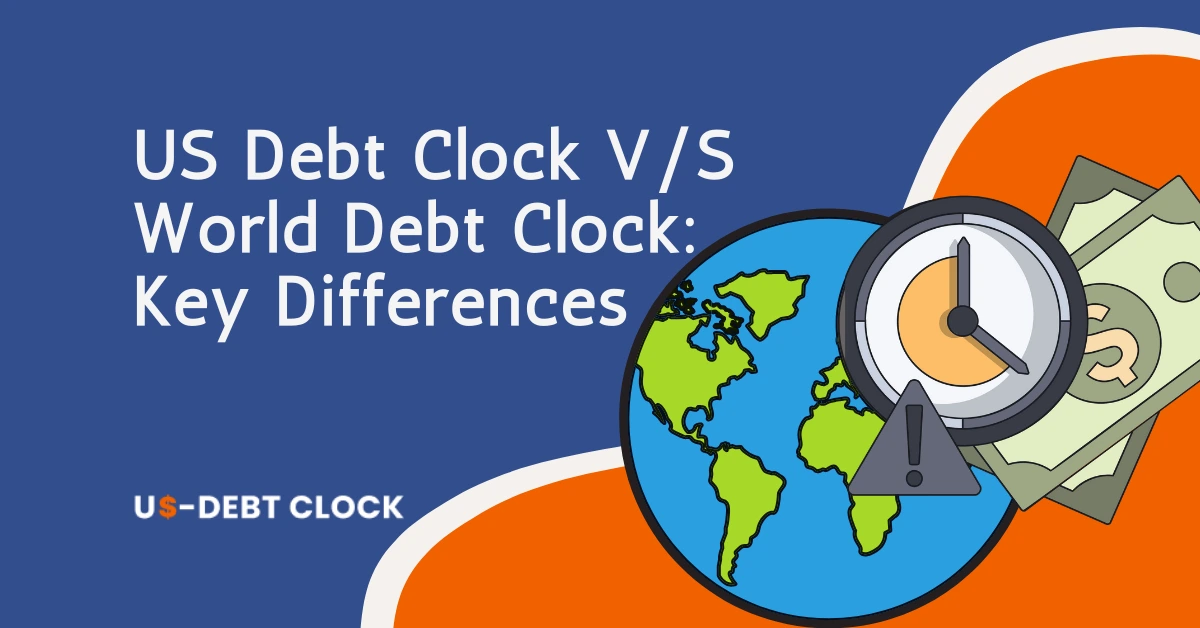As of October 2024, the US national debt is a mind-boggling $35.7 trillion. It is a staggering number, and if you have ever come across the US Debt Clock, you know that the figure is constantly increasing in real time.Â
Â
This growing debt has been decades in the making, fueled by wars, economic downturns, and aggressive government spending.Â
Â
If you are curious about how the US found itself in this massive financial hole, you are not alone. The National Debt Clock did not suddenly jump to trillions overnight, it has been steadily increasing over the years due to a series of key events, policy decisions, and sometimes, circumstances beyond anyoneâs control.
Â
In this article, USA Debt Now will break down how the debt has grown, explore the economic implications, and discuss how the US can possibly manage this issue going forward. Letâs dive in.
Â
Alarming Trend US Debt Over Time
Â
First, let's put the current debt into perspective. In 1994, the national debt was "only" around $4 trillion. That is still a huge number, but compared to todayâs $35.7 trillion, it seems almost manageable. Over the past three decades, the National Debt Clock has exploded nearly ninefold, and itâs not slowing down anytime soon.Â
Â
Each US president has had a hand in this ever-growing debt. Here is a quick rundown of how the debt increased during their time in office:
Â
- Bill Clinton (1993-2001): The national debt rose by $1.6 trillion under Clinton, even though the US actually ran a budget surplus in the late 1990s. This was largely because of military spending and various government programs that added to the overall debt.
 Â
- George W. Bush (2001-2009): Bush oversaw a $6.1 trillion increase in the debt. The wars in Iraq and Afghanistan, combined with tax cuts and the 2008 financial crisis, caused a massive spike in government spending, leading to a ballooning US Debt Clock.
Â
- Barack Obama (2009-2017): The debt surged by about $9.3 trillion under Obama, primarily due to stimulus efforts aimed at combating the Great Recession, expanded social programs like healthcare, and the need to stabilize the economy.
Â
- Donald Trump (2017-2021): Trumpâs time in office added roughly $7.5 trillion to the National Debt Clock. This was due to tax cuts, increased defense spending, and significant expenditures related to the COVID-19 pandemic.
Â
- Joe Biden (2021-present): So far, Biden has added about $7.93 trillion to the US Debt Clock, with much of it stemming from infrastructure spending, social welfare programs, and pandemic-related relief efforts.
The big takeaway here is that no matter which political party is in power, the National Debt Clock is increasing every year under every administration.
Â
The Hidden Cost of Debt: Interest Payments
Â
When it comes to debt, the actual borrowing is just part of the problem. The real pain comes with the interest payments. Just like when you borrow money and have to pay interest on your loan, the US government has to pay interest on its debt. This interest has become one of the largest items in the federal budget.
Â
As of August 2024, interest payments on the national debt had already reached a whopping $843 billion for the year. Experts project that by the end of 2024, interest payments could hit $892 billion. And this is just the beginningâif things continue as they are, annual interest costs could balloon to $1.7 trillion by 2034.Â
Â
To put this in perspective, that is more than 20% of all federal revenue going just to interest payments. This means that a huge chunk of the money the government collects in taxes will be used to service debt, leaving less money for other important areas like healthcare, education, and infrastructure. The US Debt Clock will continue ticking upwards at an alarming rate if these interest payments keep rising.
Â
Why Is the Debt Growing So Quickly?
Â
You might wonder why the debt keeps growing at such an alarming rate. There is no single reason: it is more like a mixture of factors that are contributing to this financial burden. Letâs look at some of the main drivers of the US Debt Clock:
Â
1. Tax Cuts: Tax revenue is the lifeblood of any government, and when taxes are cut, the government collects less money. Both George W. Bush and Donald Trump introduced significant tax cuts, which led to wider budget deficits and ultimately added to the National Debt Clock.
Â
2. Military Spending: The US spends more on defense than any other country in the world. The wars in Iraq and Afghanistan, as well as ongoing defense costs, have been a major drain on government finances. Even though the wars have technically ended, military spending remains high, pushing the US Debt Clock higher.
Â
3. Social Programs: The US has a large aging population, which means increased spending on Social Security, Medicare, and other related social programs. These are non-discretionary expenses, meaning the government has to pay them no matter what, and they make up a significant portion of the federal budget, adding more to the National Debt Clock.
Â
4. Economic Crises: The Great Recession of 2008 and the COVID-19 pandemic are two major events that forced the government to spend trillions on economic stimulus, bailouts, and relief efforts. While these measures were necessary to stabilize the economy, they added significantly to the US Debt Clock.
Â
5. Higher Interest Rates: To combat inflation, the Federal Reserve has raised interest rates. While this helps curb rising prices, it also makes borrowing more expensive for the government, adding to the overall debt problem and further pushing the National Debt Clock upwards.
Â
Economic Implications of a Growing National Debt
Â
So, what does all this debt mean for the average person and the economy as a whole? Here are a few key ways the growing National Debt Clock can impact the economy:
Â
1. Crowding Out Investment: When the government borrows a lot of money, it competes with businesses and individuals who also want to borrow money. This can make it more expensive for businesses to get loans, which can lead to slower growth and fewer jobs.
Â
2. Less Flexibility for Future Crises: If another financial crisis or pandemic were to hit, the government would have less room to respond with stimulus measures because so much of the budget is already tied up in interest payments and existing debt.
Â
3. Risk of a Debt Crisis: If investors start to doubt the US governmentâs ability to repay its debt, it could lead to a sudden spike in interest rates, which would make borrowing even more expensive and could trigger a fiscal crisis. This would push the US Debt Clock even further into dangerous territory.
Â
How Can the US Manage Its Debt?
Â
Tackling the national debt isnât easy, but there are a few steps the US government could take to get things under control and prevent the National Debt Clock from spiraling out of control:
Â
1. Reform Social Programs: One option is to make changes to Social Security and Medicare, such as raising the retirement age or adjusting benefits. These programs are long-term obligations, and reforming them could significantly reduce future spending and stabilize the US Debt Clock.
Â
2. Revise Tax Policies: Closing tax loopholes and raising taxes on the wealthiest Americans could help increase government revenue. While tax increases are always a tough sell politically, they may be necessary to reduce the deficit and slow down the National Debt Clock.
Â
3. Cut Wasteful Spending: The government could also look for ways to cut spending on programs that donât deliver high returns. This could involve eliminating unnecessary subsidies or reducing funding for programs that arenât achieving their intended goals, helping to bring the US Debt Clock under control.
Â
4. Invest in Growth: The government can also focus on policies that stimulate economic growth, such as investing in infrastructure and education. A growing economy means higher tax revenues, which can help reduce the debt-to-GDP ratio over time, putting a brake on the National Debt Clock.
Â
Final Thoughts: A Wake-Up Call from the US Debt Clock
Â
The US national debt is a serious issue that is not going away anytime soon. The numbers on the US Debt Clock and the National Debt Clock are a constant reminder that the countryâs financial obligations are growing at an unsustainable rate. Without significant reforms, the debt will continue to limit the governmentâs ability to invest in important programs and respond to future crises.Â
Â
The good news is that there are solutions available. By making strategic adjustments to taxes, spending, and social programs, the US can start to get its debt under control. Itâs not going to be easy, but understanding how we got here is the first step in finding a way forward.
Â
For more insights into the US national debt, visit USA Debt Now.



